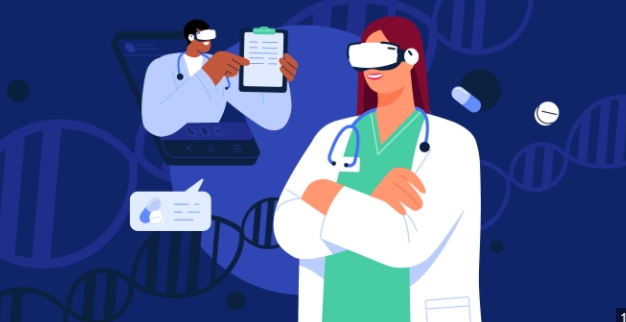Virtual and Augmented Reality (VR and AR) technologies have rapidly advanced in recent years, offering new possibilities in the field of healthcare. These technologies are revolutionizing the way medical professionals deliver care and how patients experience treatment.
Enhanced Training for Healthcare Professionals
VR and AR are being used to train healthcare professionals in a more immersive and interactive way. Surgeons can practice complex procedures in a simulated environment, allowing them to hone their skills without putting patients at risk. Medical students can also benefit from virtual anatomy lessons, giving them a better understanding of the human body.
Improved Patient Care and Treatment
Patients can benefit from VR and AR in various ways. For example, these technologies can be used for pain management during medical procedures or to distract patients during uncomfortable treatments. VR can also be used for therapeutic purposes, such as helping patients with phobias or PTSD through exposure therapy.
Remote Consultations and Monitoring
Telemedicine has become increasingly popular, especially during the COVID-19 pandemic. VR and AR technologies can enhance remote consultations by allowing healthcare providers to interact with patients in a more immersive way. These technologies can also be used for remote monitoring of patients, helping physicians track their progress and make more informed decisions about their care.
Surgical Planning and Visualization
VR and AR can greatly assist in surgical planning and visualization. Surgeons can use these technologies to overlay medical imaging data onto a patient’s body, helping them visualize the anatomy in a more interactive way. This can improve surgical precision and reduce the risk of complications during procedures.
Rehabilitation and Physical Therapy
VR and AR are also being used in rehabilitation and physical therapy settings. Patients recovering from injuries or surgeries can engage in virtual exercises that mimic real-life movements, making therapy more engaging and effective. These technologies can also track patients’ progress over time, helping healthcare providers adjust treatment plans as needed.
In conclusion, VR and AR are transforming the healthcare industry in unprecedented ways. From enhanced training for professionals to improved patient care and treatment, these technologies have the potential to revolutionize how we approach healthcare. As technology continues to advance, we can expect to see even more innovative applications of VR and AR in the field of healthcare.

